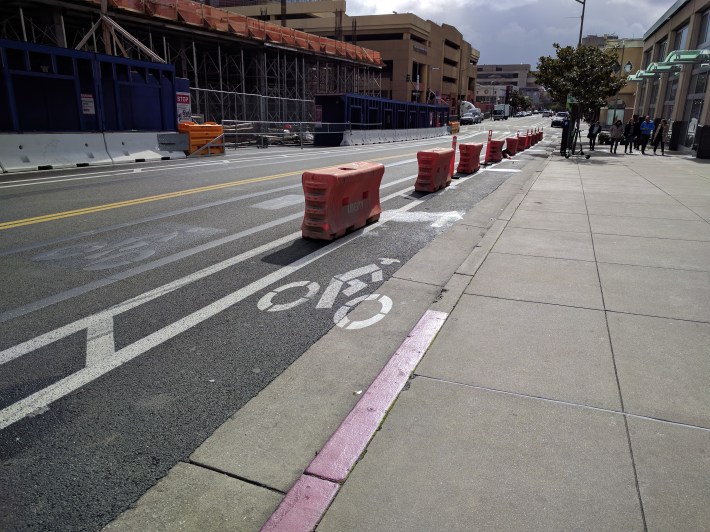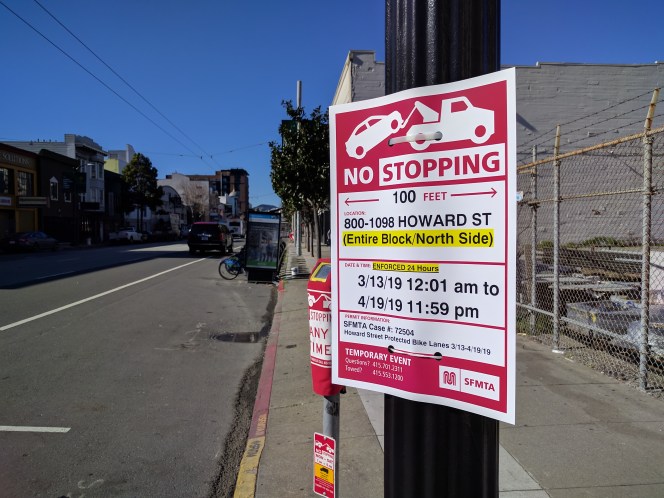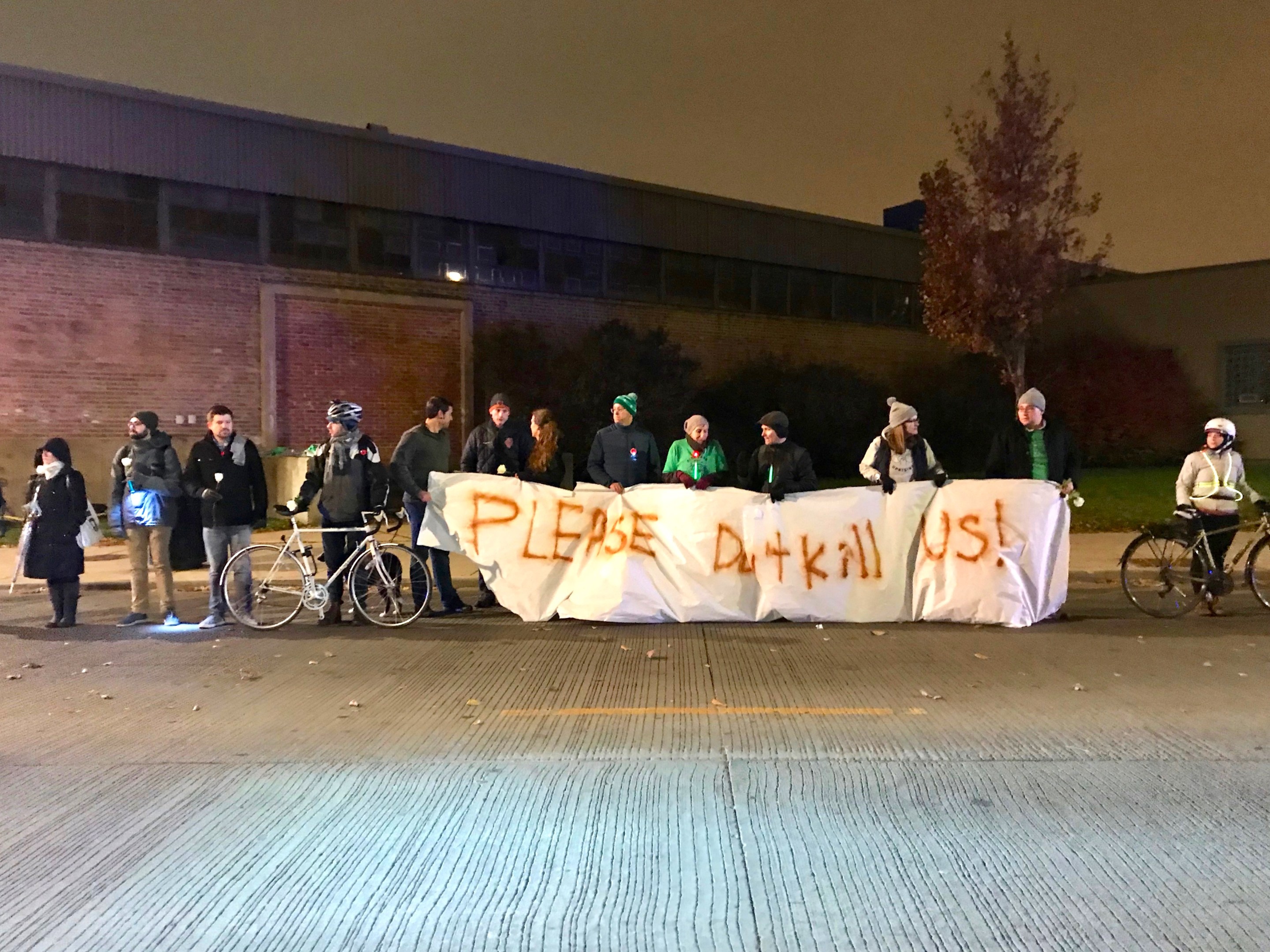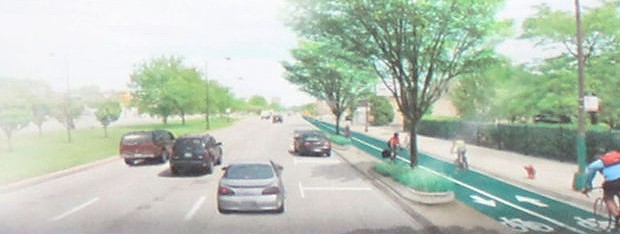Every Mayor's Bicycle Advisory Council meeting begins with a Chicago Department of Transportation official providing an update on recent bike fatalities. Sadly, sometimes it seems like the city of Chicago doesn't have much more to offer besides words in response to the deaths of cyclists.
For example, a few years ago the Chicago Department of Transportation proposed converting a lane or two of Stony Island Avenue between 67th and 79th into protected bike lanes. The plan was opposed by 5th Ward Alderman Leslie Hairston and 8th Ward alderman Michelle Harris on the grounds that it would cause traffic congestion. Then in July 2018, Luster Jackson, 58, was killed on his bike on the 7200 block of South Stony Island in South Shore after he dodged a car door opened in his path by a driver, and was then struck by another motorist. That tragedy that could have been prevented if the protected bike lanes had been built, but the city took no action following Jackson's death.
Last November Lee Luellen, 40, was fatally struck on his bike five blocks north of Jackson's crash site at 67th and Stony Island in Grand Crossing. The unlicensed, uninsured northbound driver was also cited for failure to reduce speed. If the city had implemented the road diet with protected lanes, the narrower street width likely would have encouraged the motorist to drive slower, possibly preventing the crash. Still, the city hasn't announced plans for any changes to Stony Island.
This stretch of Stony Island Avenue is designated as a high-crash corridor in Chicago's Vision Zero crash reduction plan. Unfortunately, the city of Chicago allows street designs that are proven to reduce crashes and fatalities to be vetoed by politician like Hairston and Harris who are not experts in transportation planning, whose main concern seems to be avoiding a backlash at the polls from their constituents who drive. This is completely incompatible with the city's goal to eradicate traffic violence.
Also last November, school counselor Carla Aiello, 37, was struck and killed by a right-turning truck driver as she rode to work in the heavily-faded Milwaukee Avenue bike lane in Old Irving Park. At a vigil at the site that evening, local alderman James Gardiner told Streetsblog has reached out to the CDOT about refreshing the bikeway markings on Milwaukee and elsewhere in the ward. “If we could install bollards, that would be wonderful."
More than two months later, by mid-January nothing had been done, Block Club Chicago reported. Gardiner claimed that CDOT had been unresponsive. A department spokesperson said that warmer weather was needed for restriping bike lanes with thermoplastic, which will be done later this year, and CDOT will also look into whether safety upgrades such as bollards or curbs are feasible, although these improvements would have to be paid for with Gardiner's discretionary "menu" funds.
Today Block Club reported that someone, apparently frustrated with the delay, recently restriped the Milwaukee bike lane by the crash site with spray paint. Hearts were drawn in the lane with colored chalk.

A city committed to Vision Zero could easily protect cyclists by placing some Jersey barriers at this site, since there is no parking lane that would be blocked by the barriers. The fact that CDOT says permanent upgrades would require spending discretionary money highlights the inequity of requiring bicycle and pedestrian safety infrastructure to be paid for with ward funds. This system is one reason why smaller, more affluent North Side wards with residents who advocate for biking and walking tend to have better infrastructure than larger, poorer South and West side districts, where the annual $1.3 million in menu money must be spread thinner.
As such, the Active Transportation Alliance has called for earmarking $20 million annually in the city budget for bike/walk safety infrastructure, focused on underserved communities. During the mayor campaign, Lori Lightfoot pledged to do that, but that promise went by the wayside in her 2020 budget. Safe multi-modal streets should be seen as a basic city amenity, not a special perk reserved for more privileged parts of town.
The lack of action on streets like Stony Island and Milwaukee shows disrespect for people like Jackson, Lee, and Aiello who lost their lives partly due to unsafe road conditions. It's tragic that, even after people are killed while trying to transport themselves across the city by bike, the city doesn't have the political will to say, “This death was unacceptable. Let's create a safe biking route right now.”
I realize that the city is deploying much-needed safety infrastructure and education resources in West Side neighborhoods like Austin, North Lawndale, and Garfield Park as part of part of Vision Zero. But we also need to create a rapid response team to quickly create protected bikeways in areas that have seen serious injuries or fatalities. Each serious injury or death is totally preventable. We must exercise our political power and put it behind sustainable, efficient, and equitable methods of transporting human beings and building our economic, social, and environmental resilience by creating protected bikeways, safe pedestrian corridors, and efficient, frequent, accessible, and dignified transit.

The city of San Francisco offers a blueprint for a rapid responses to traffic fatalities. In 2017 Mayor Ed Lee created the Rapid Response Team through the San Francisco Municipal Transportation Agency. The rapid response team at SFMTA was tasked with “improving street conditions at fatality sites and working to resolve delays more quickly.”
“[SFMTA]’s rapid response includes an analysis of what we know about the circumstances surrounding the crash, the crash history at the location, the existing conditions, and a recommendation of what engineering improvements can be made quickly,” said spokesman Paul Rose.
Current San Francisco mayor London Breed went further in 2018 to mandate the Rapid Response Team “respond within within one hour of a serious injury or fatality of a cyclist and analyze, over a 24-hour period, how improvements can be made to avoid another incident. Those improvements then must be made within 72 hours of an incident” according to an official statement.
It would be wonderful to see Chicago's transportation department follow suit by taking action to improve safety within hours of a serious or fatal crash, rather than waiting months to make improvements, or not doing anything at all.
In addition to the creation of a Rapid Response Team, we need to create a city and agency ethos at CDOT, the Illinois Department of Transportation, and the various transit agencies that it's best to design streets in a proactive way. We cannot wait until someone is injured or killed to make improvements. CDOT already has lots of data on which bike lanes see the most 311 tickets related to drivers parking or driving in bike lanes. If the city and the state truly cared about safety, this would trigger a redesign of bike lanes.
Last night I watched a video featuring Meredith Glaser, an American who moved to the Netherlands to study biking infrastructure and how Dutch biking infrastructure can be translated to work in the United States. She spoke of the government's policy that any injury or death that occurs within the “public space” is unacceptable. It's time we demand the same level of accountability from our own transportation agencies.





